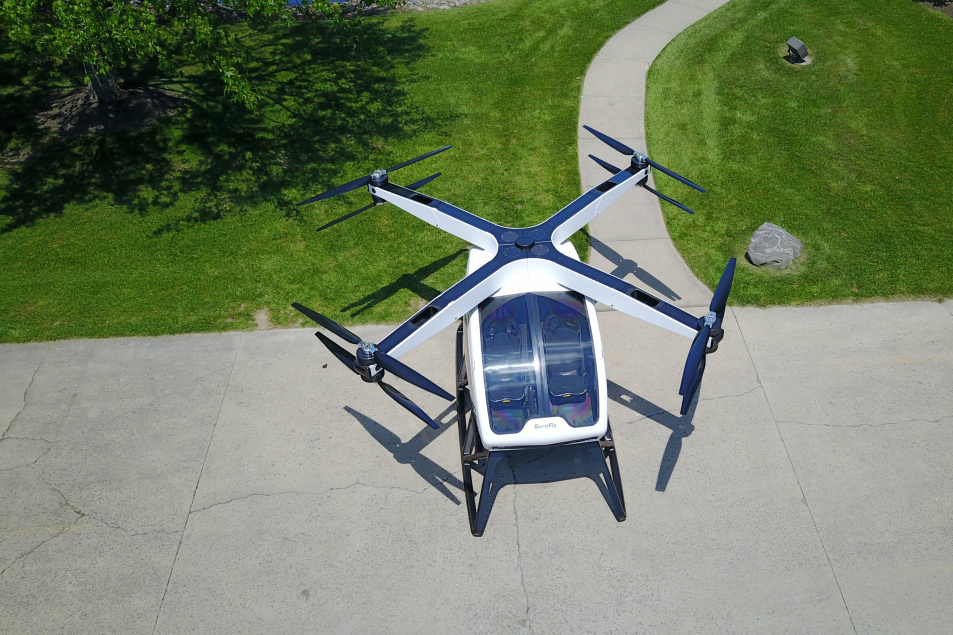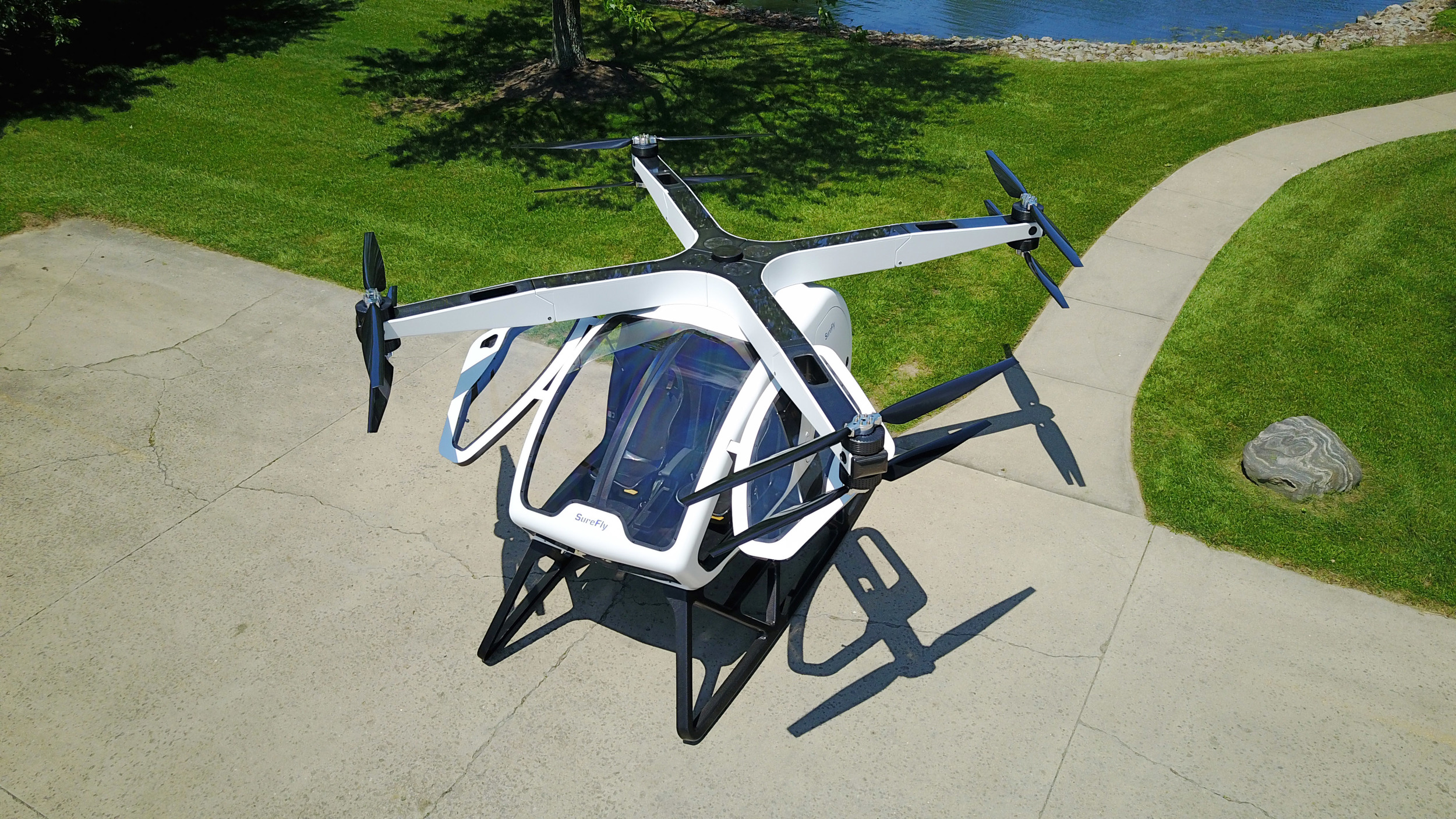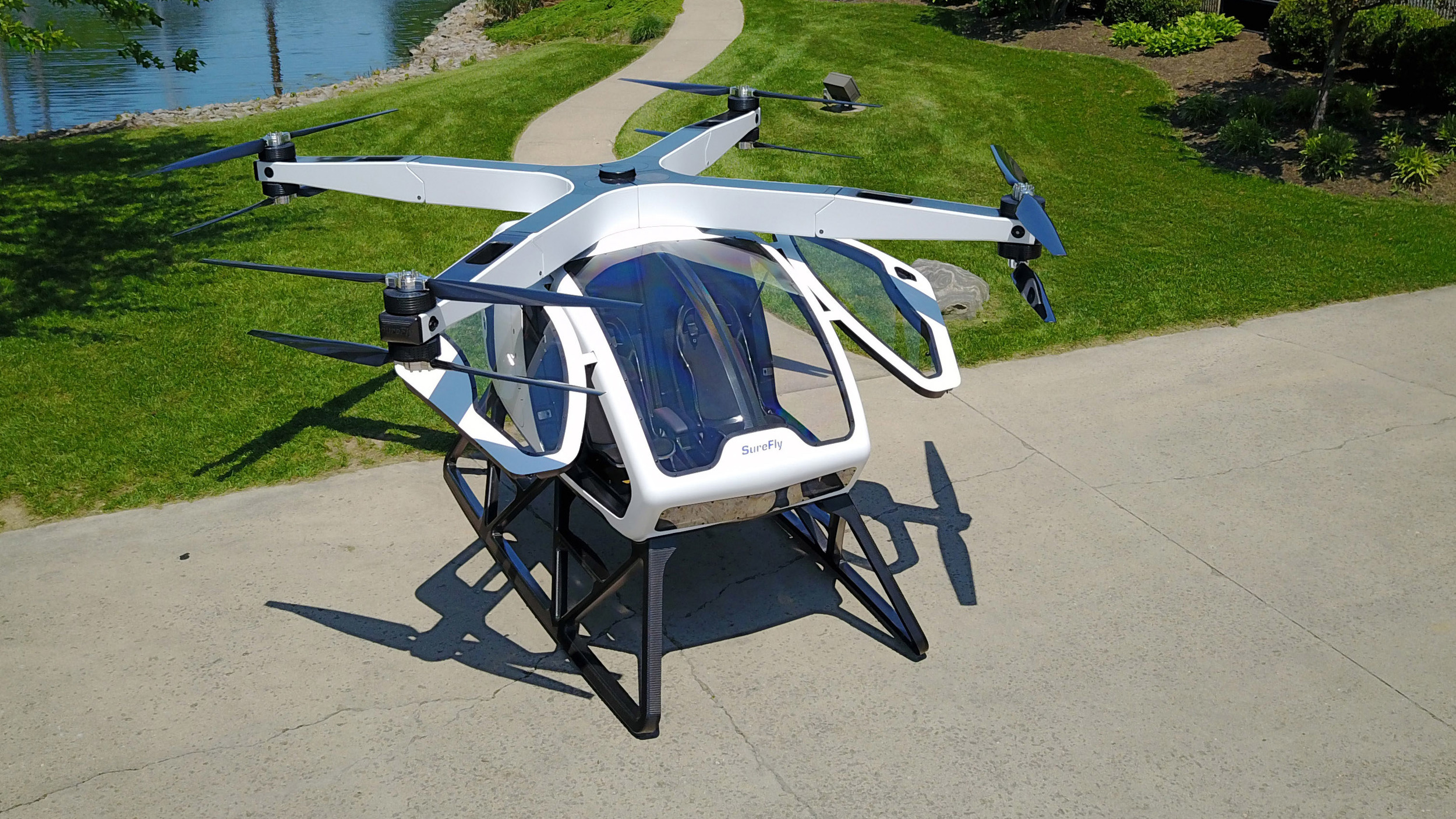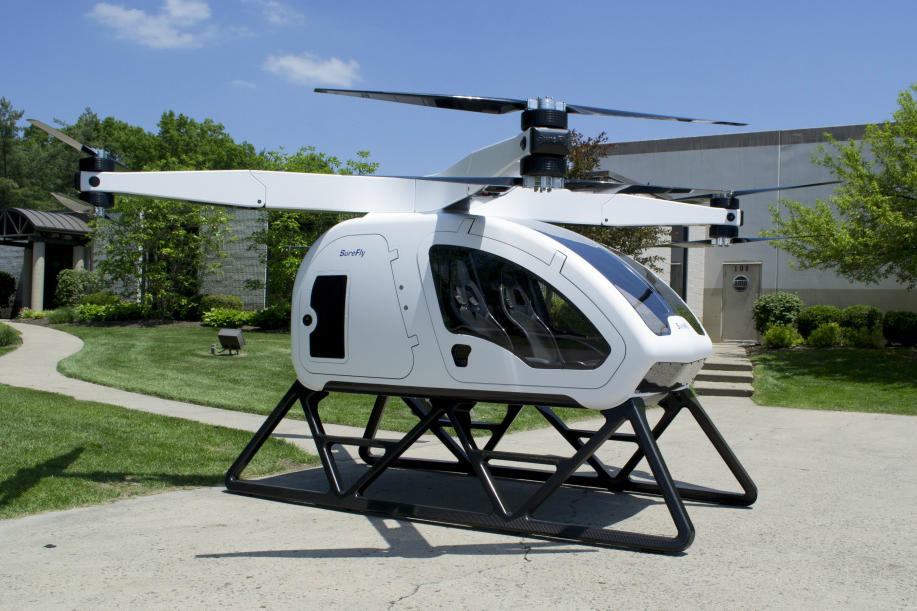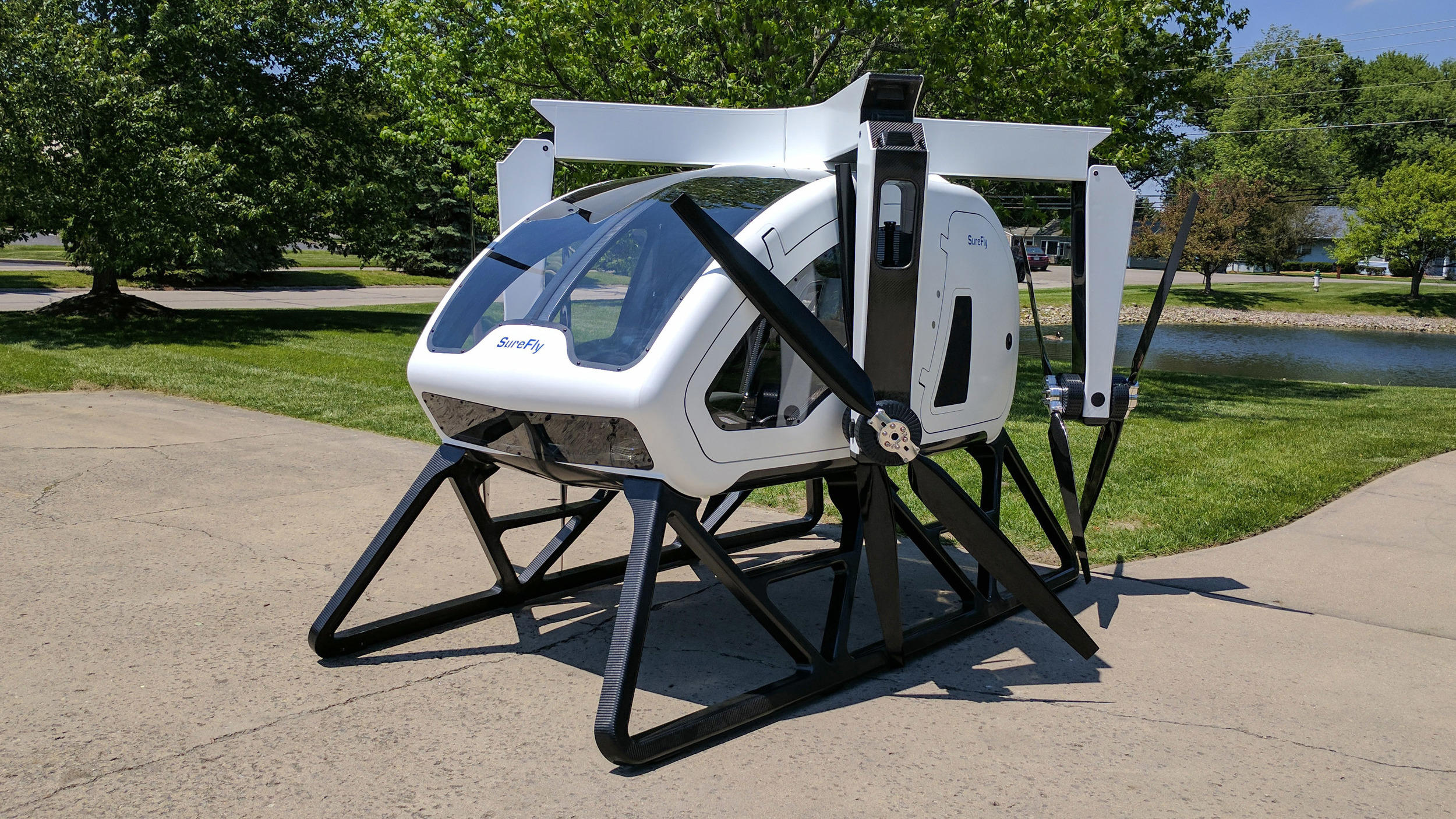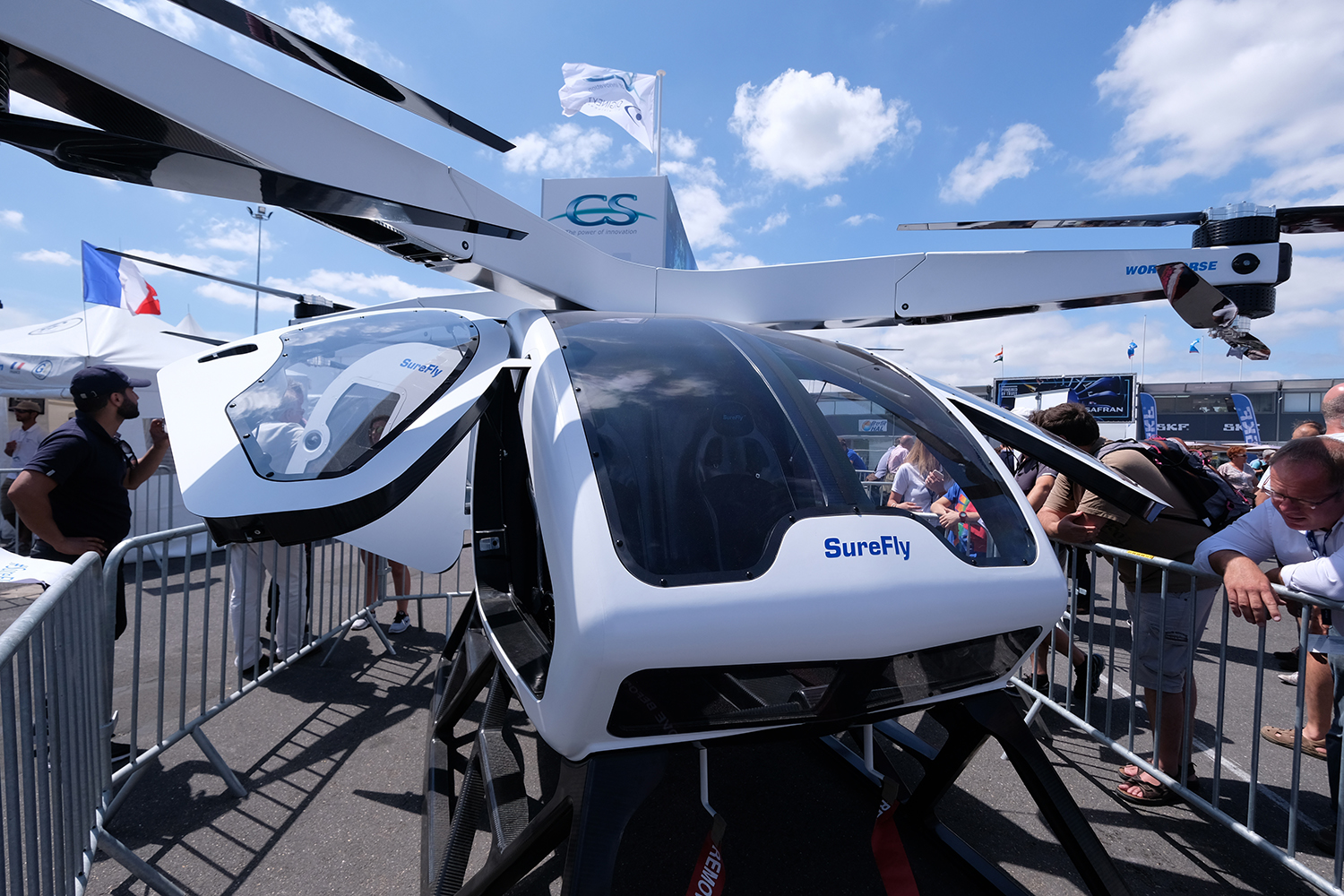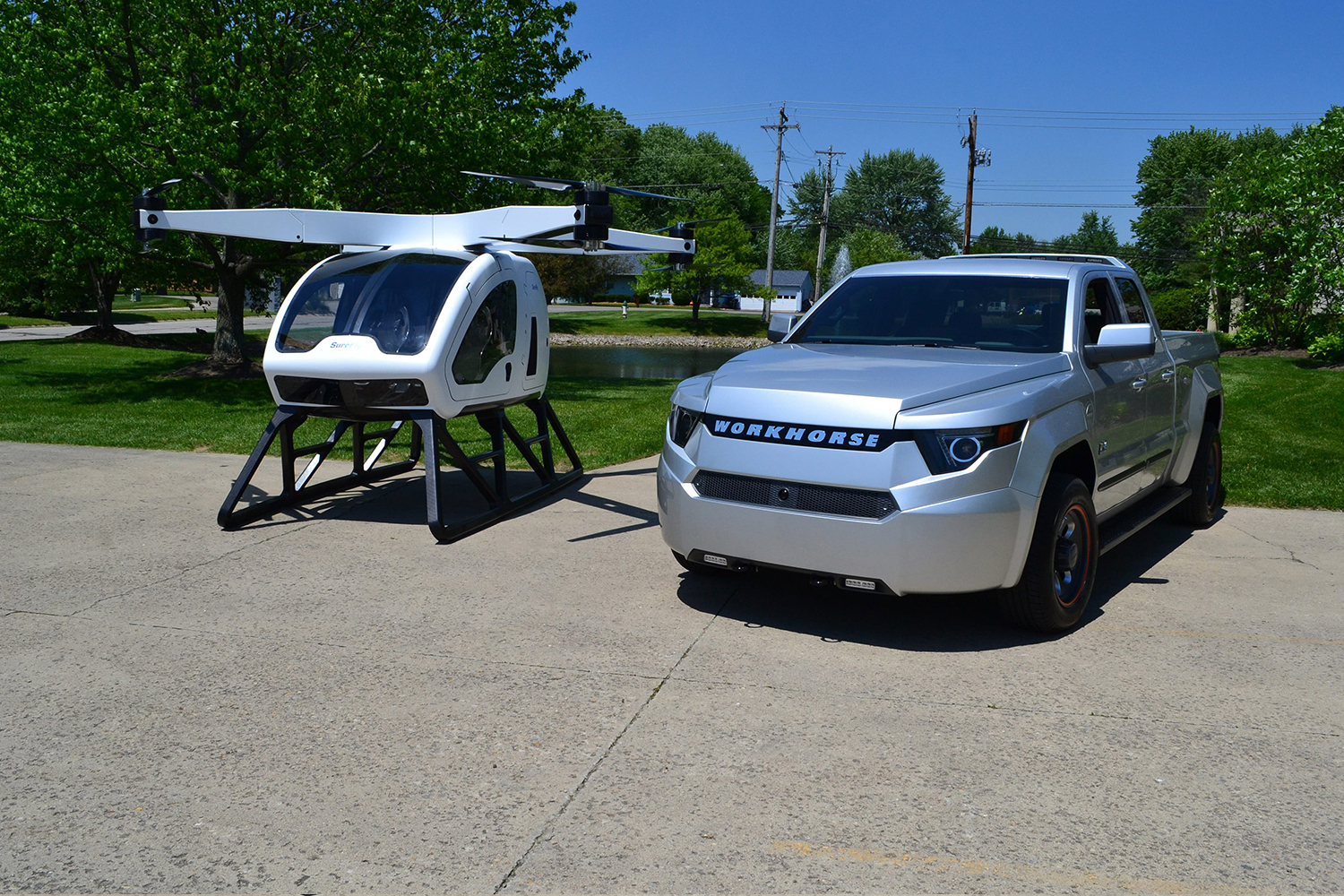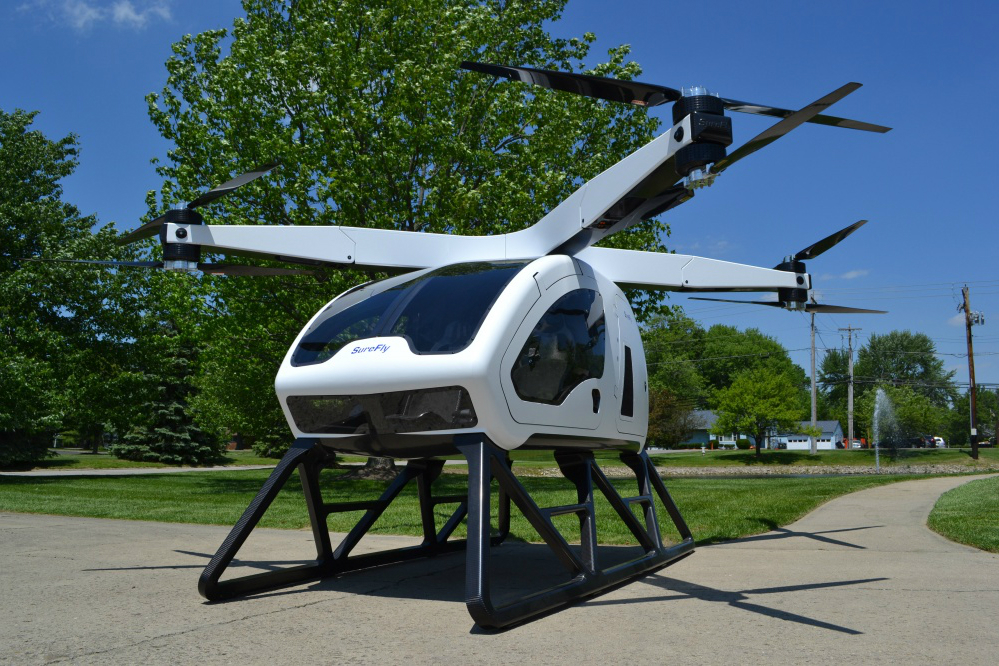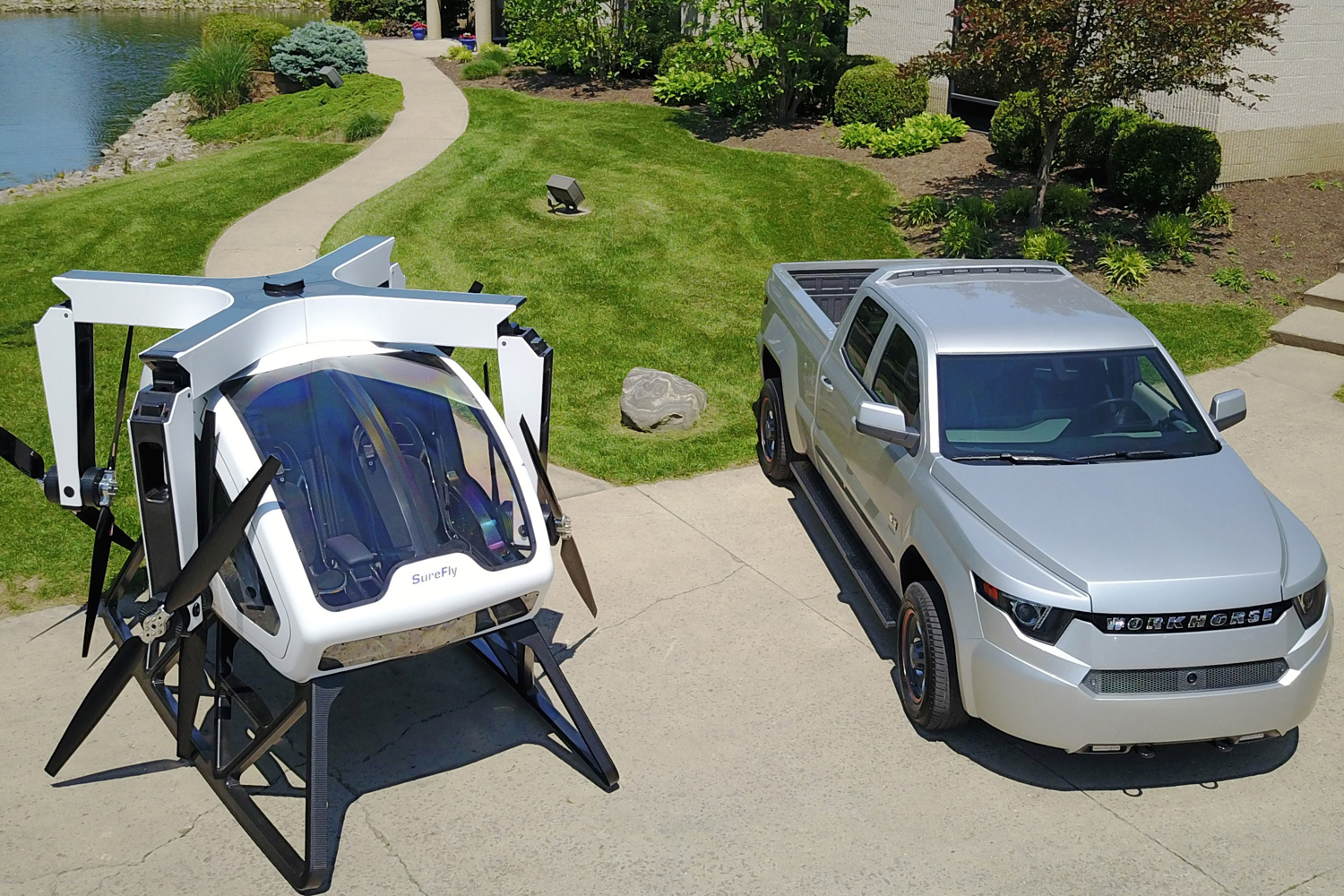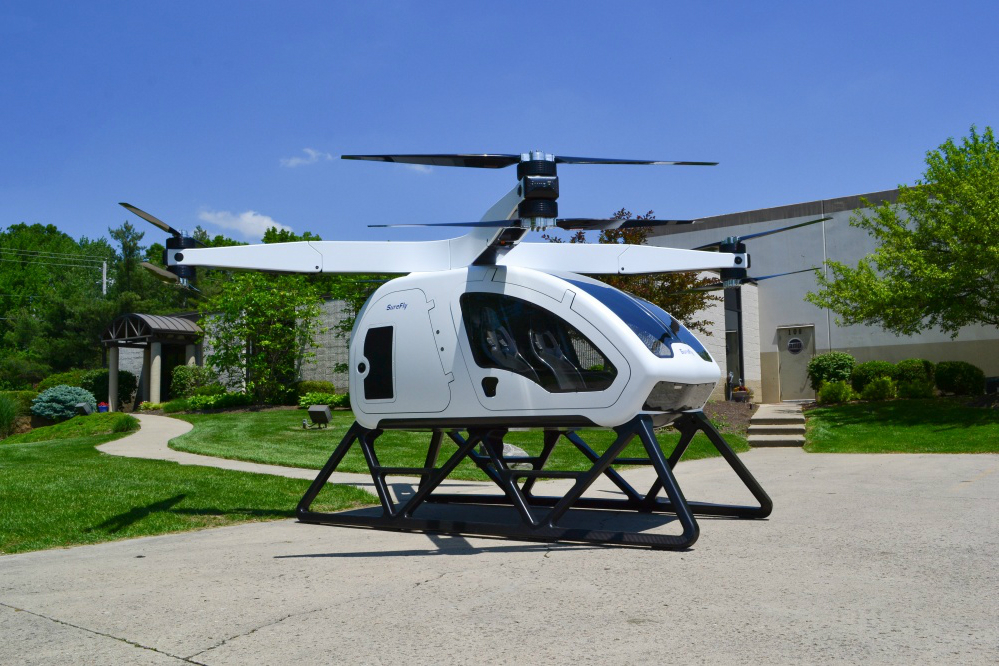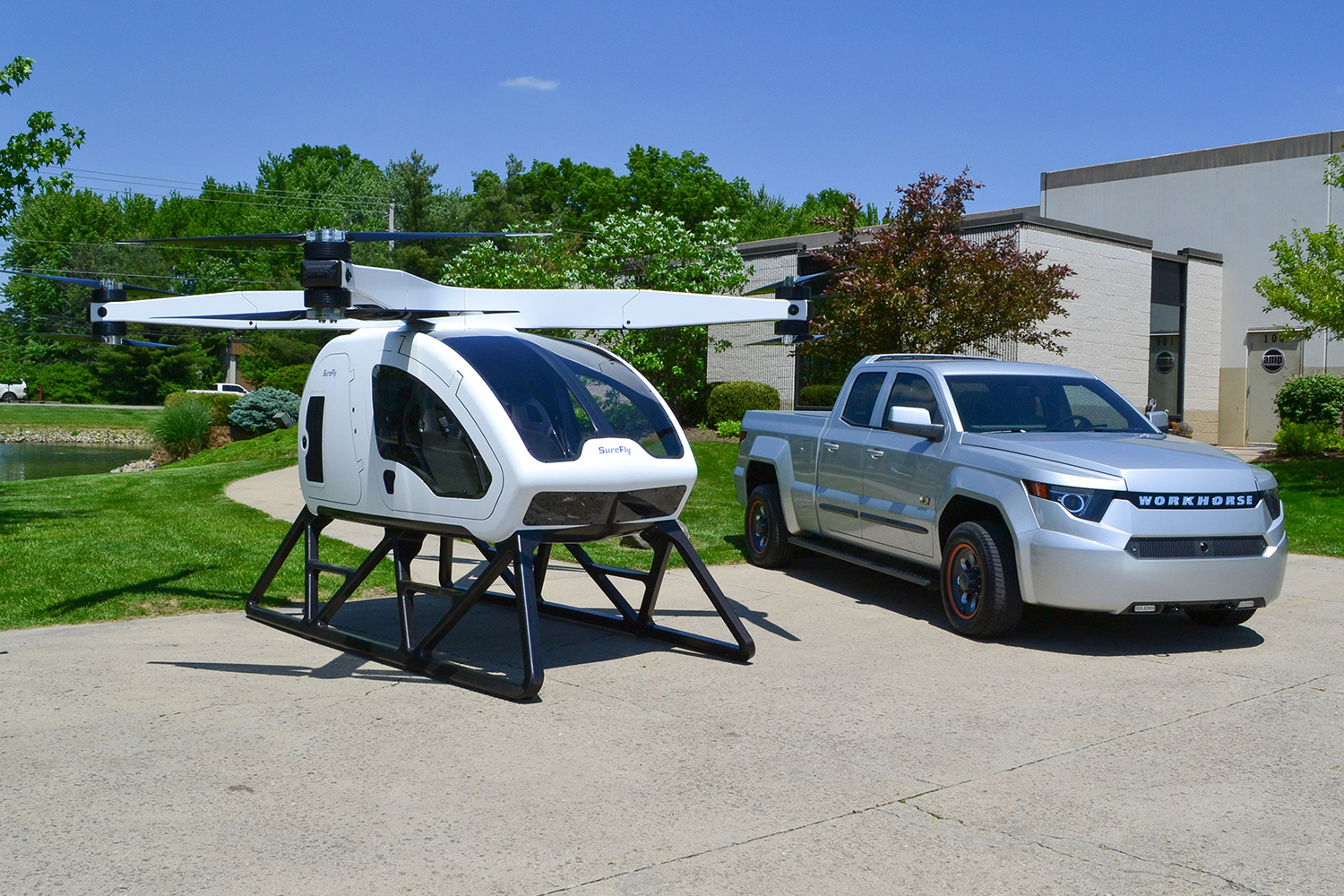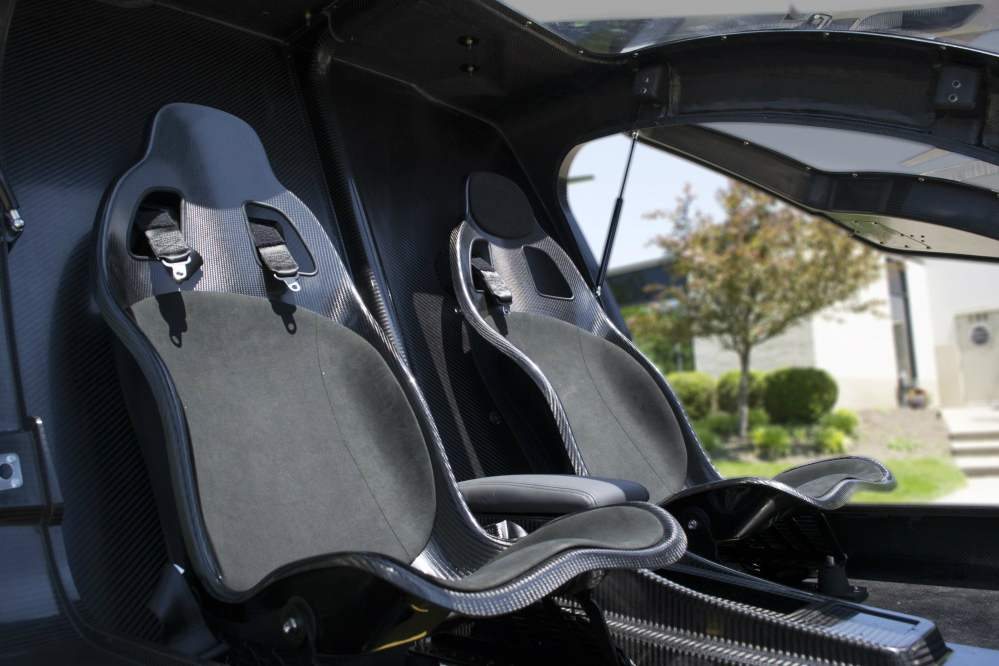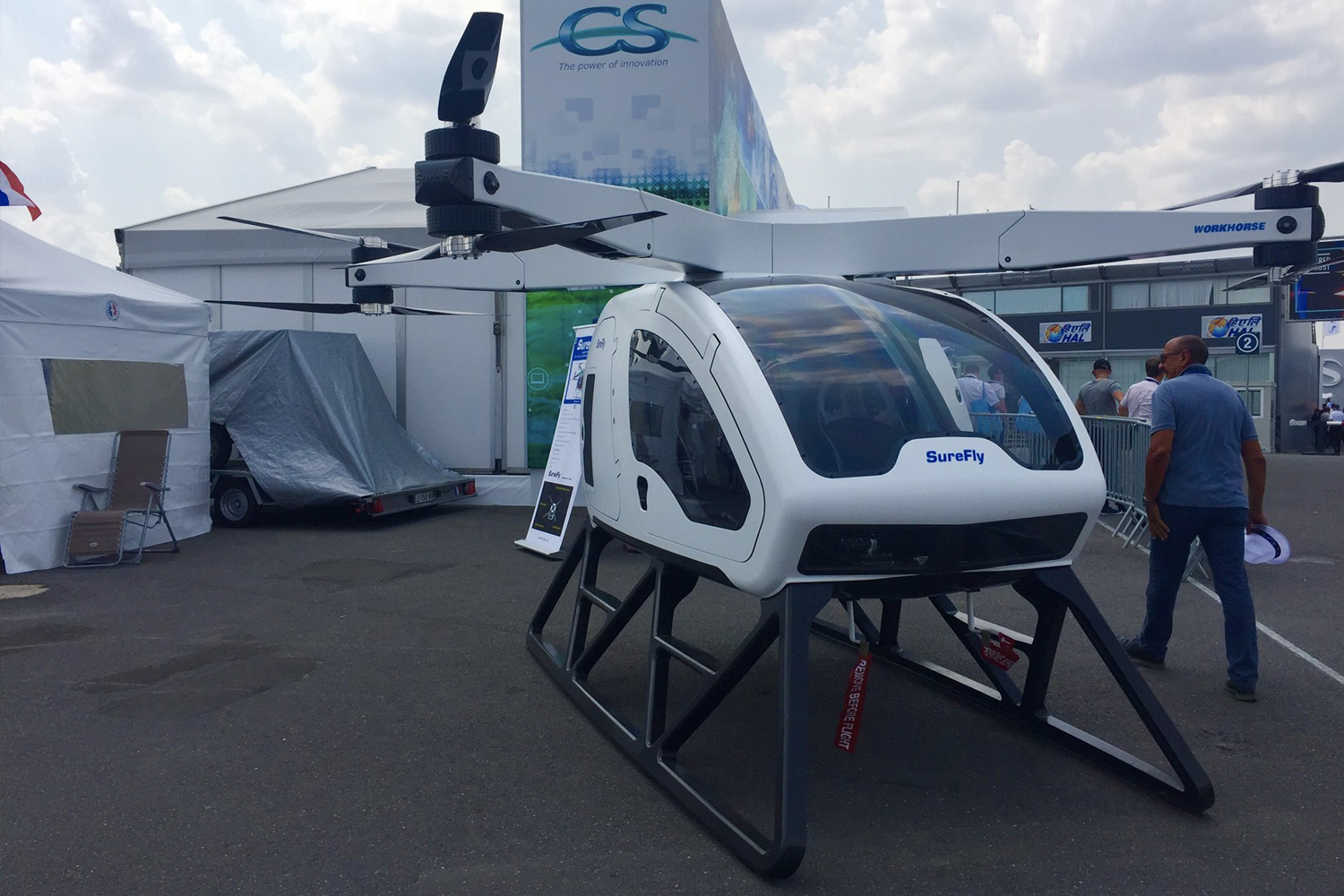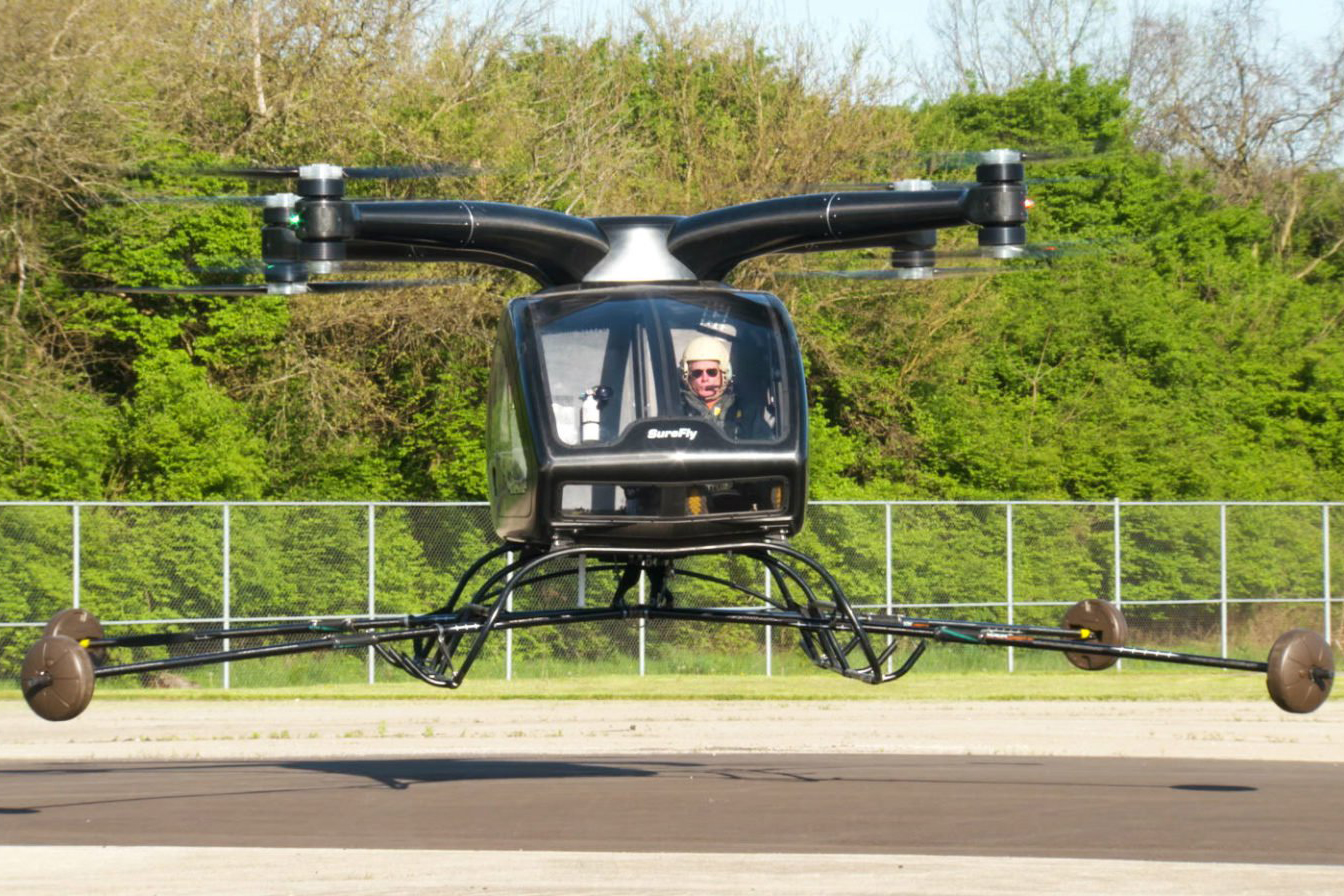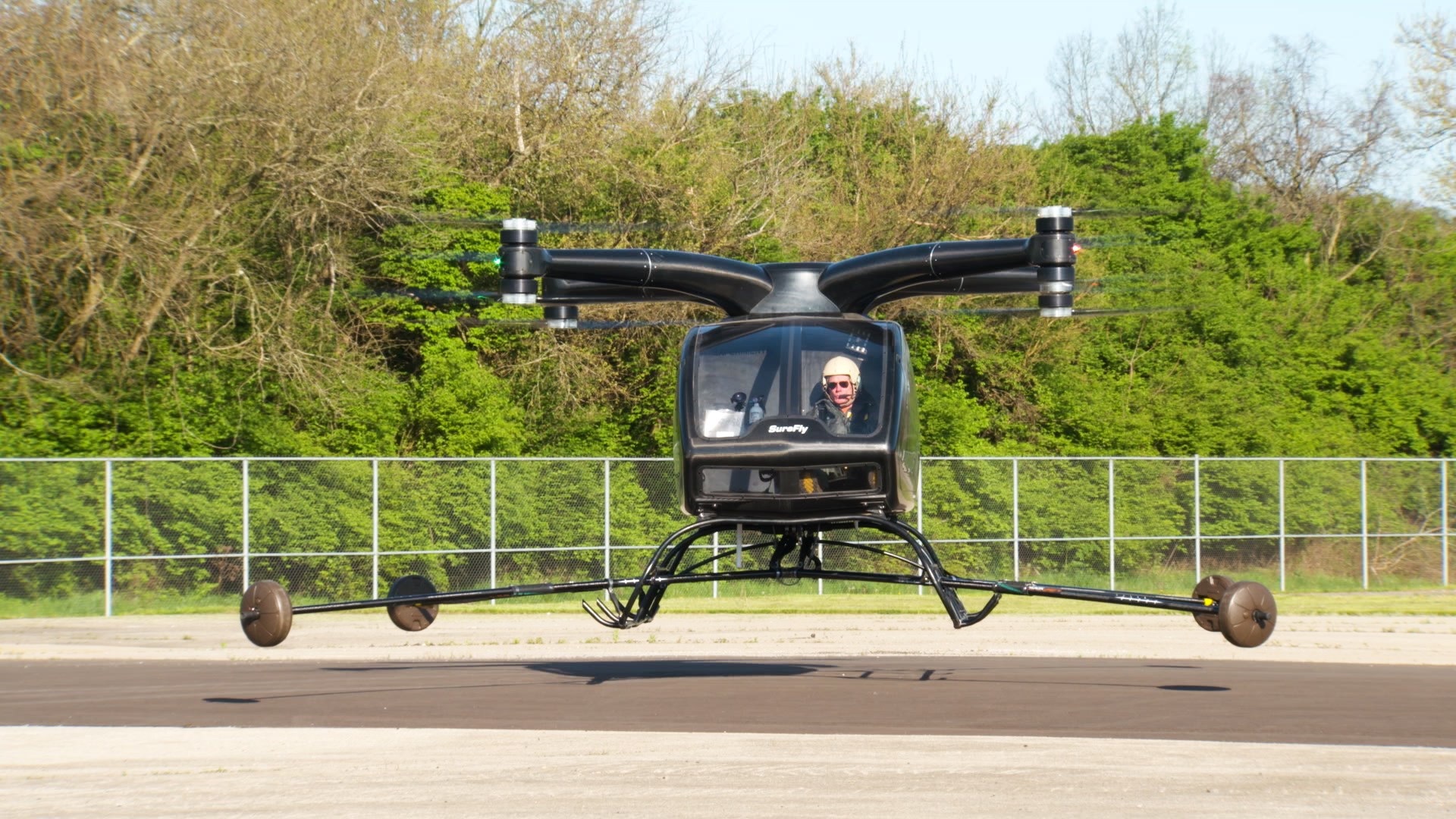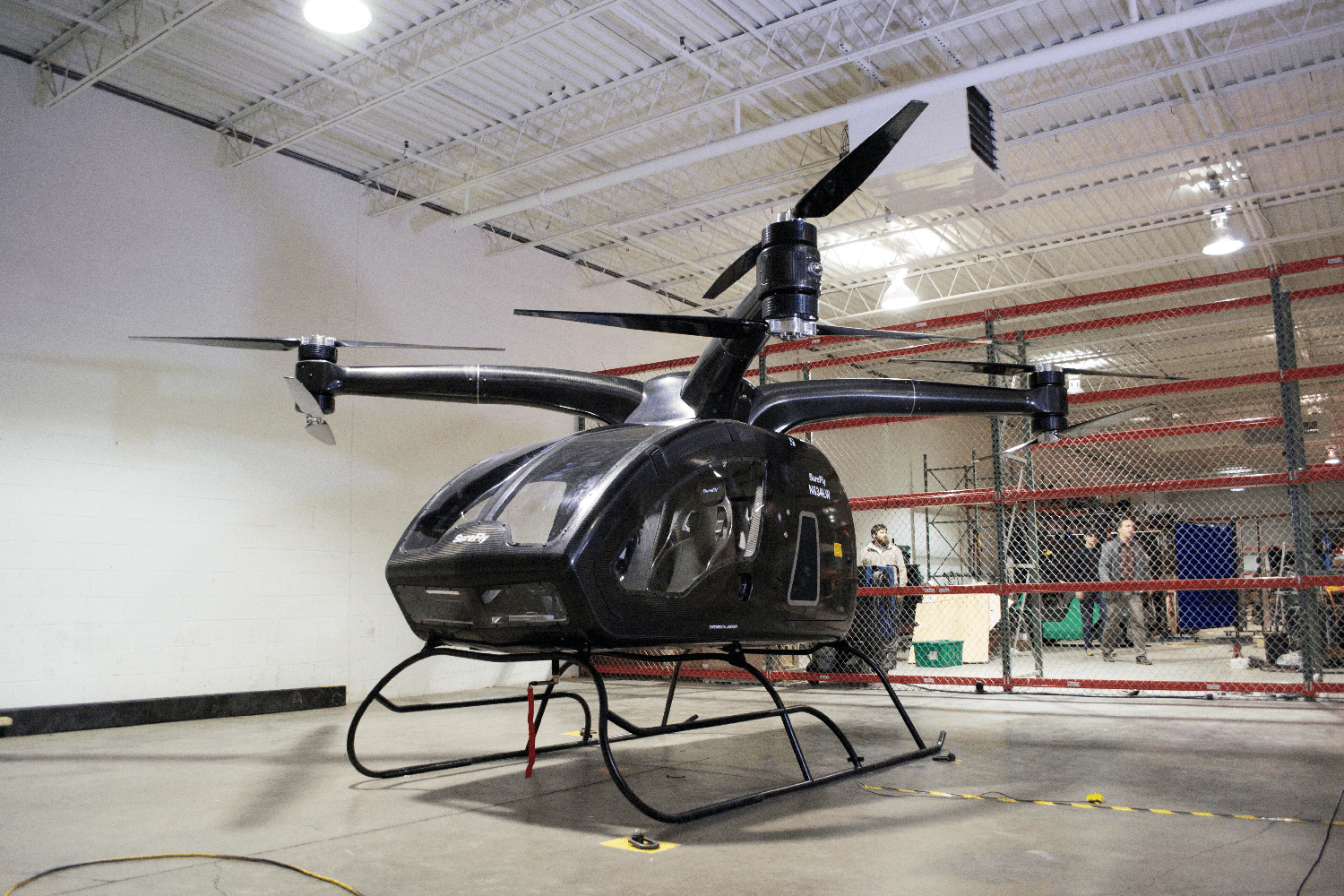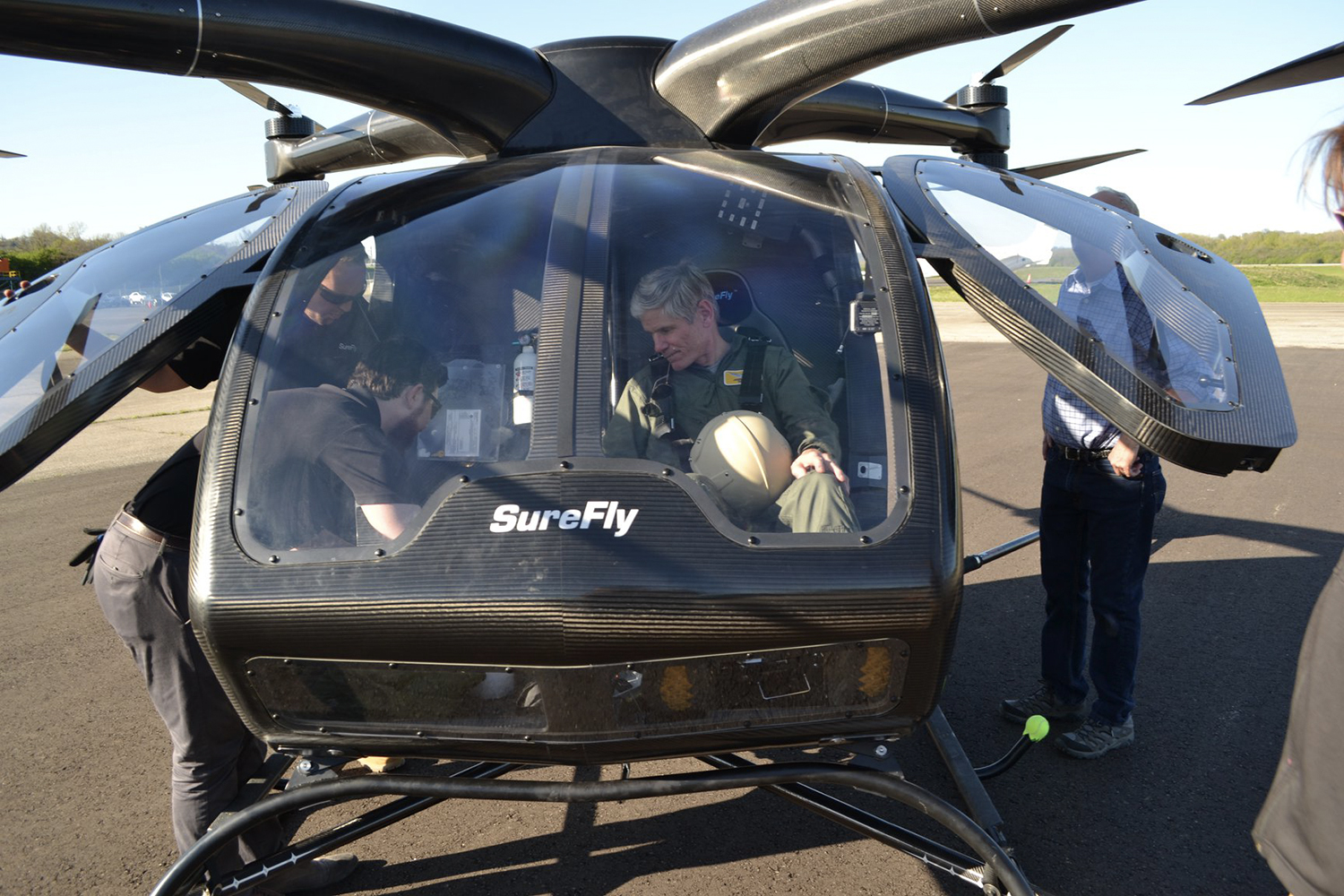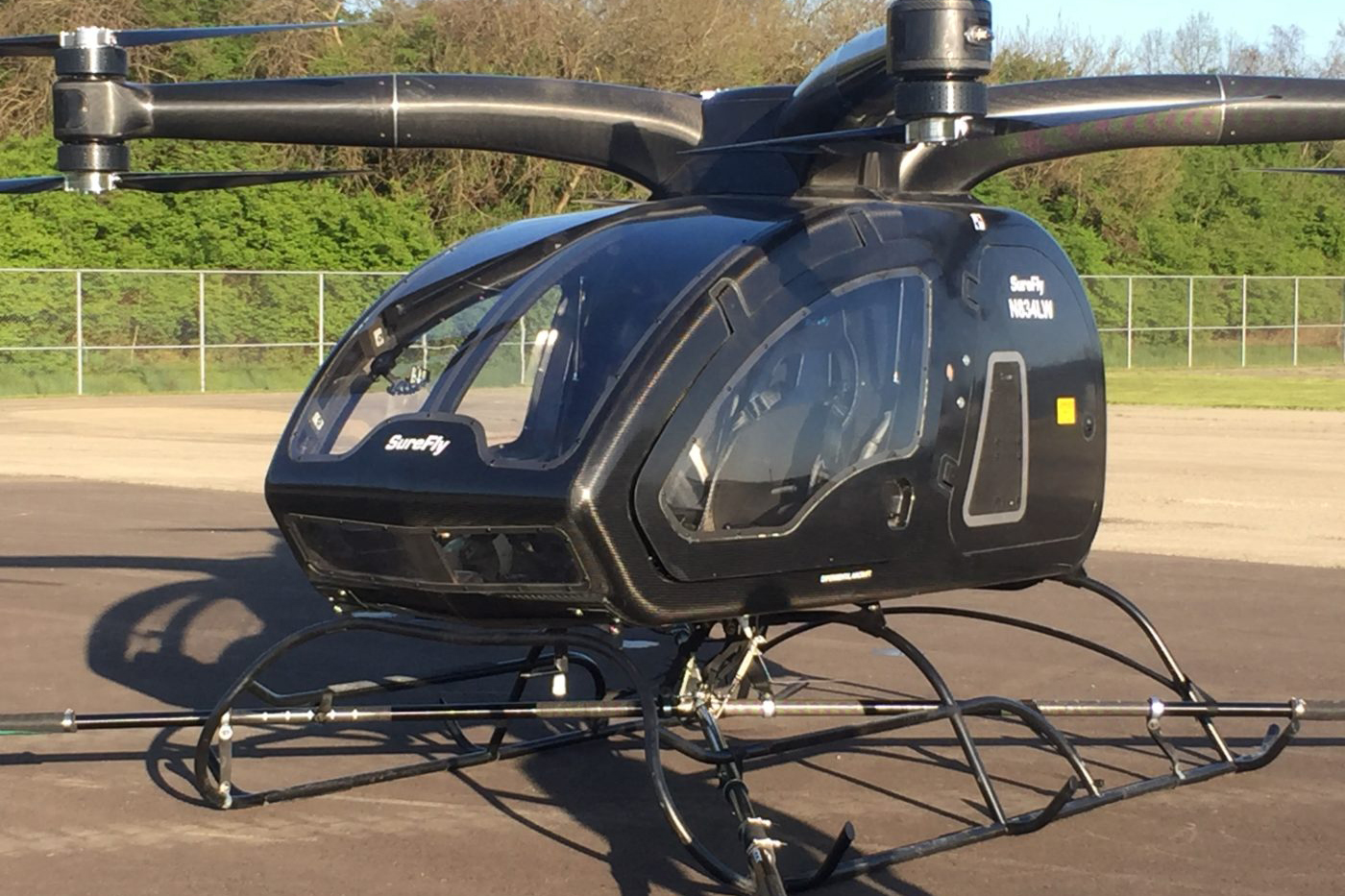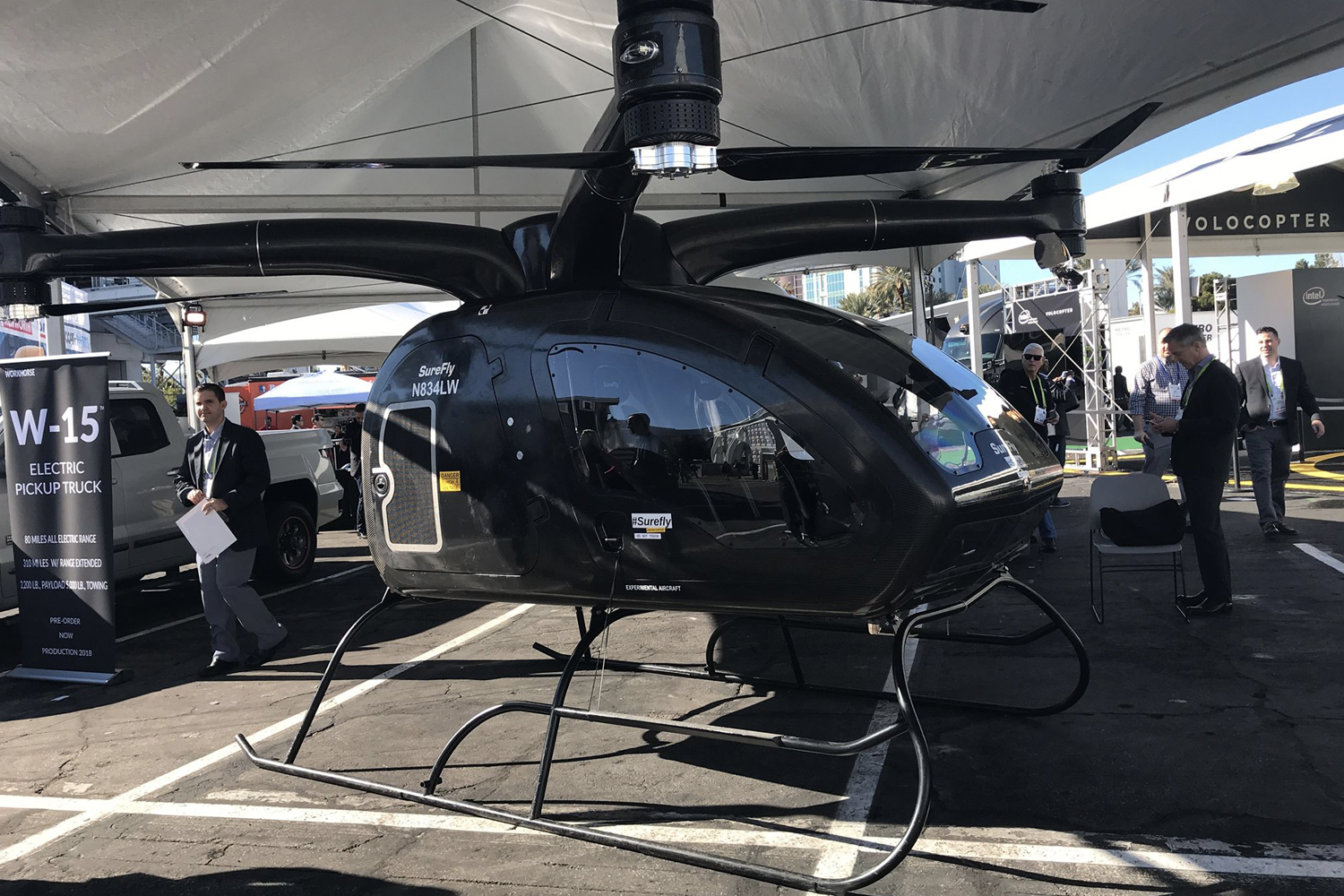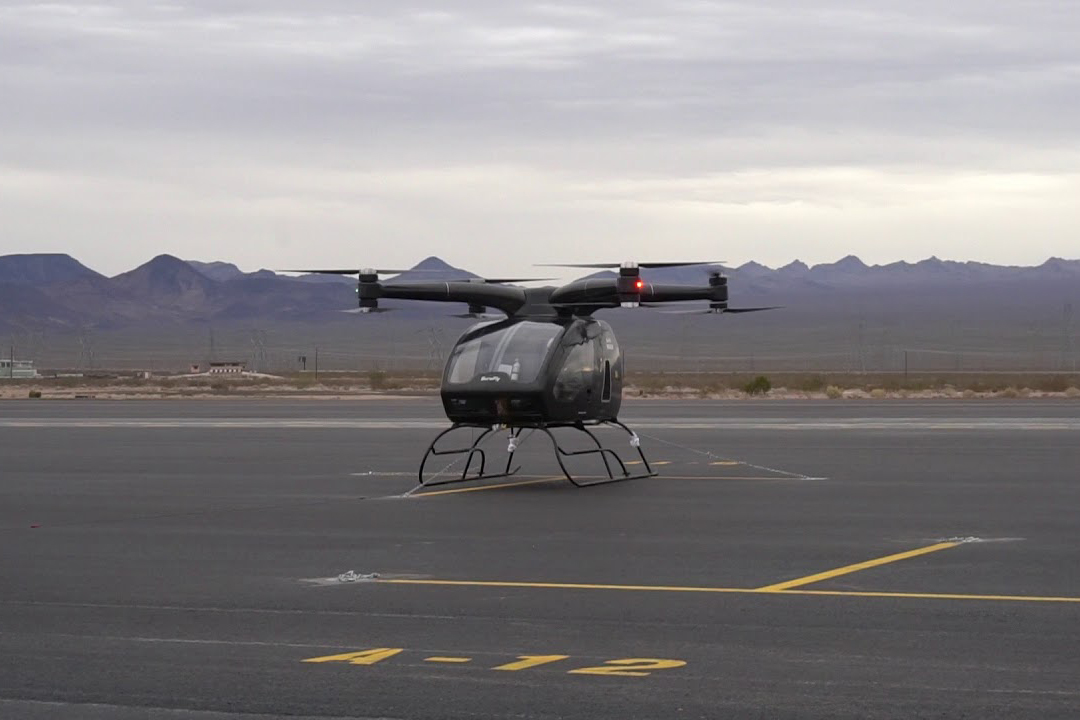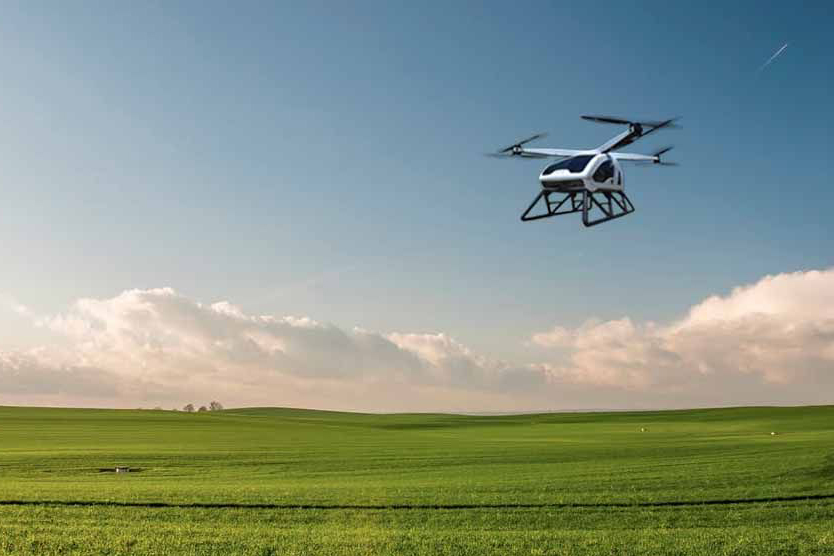Drones are already delivering us pizza and even our impulsive Amazon Prime purchases, so it was only a matter of time before a life-size model made the leap to the burgeoning air taxi market. One company in particular has unveiled its hybrid passenger-carrying model, the SureFly, and the aircraft could take flight as early as this year.
The Ohio-based firm, Workhorse, specializes in everything from autonomous drone delivery systems to hybrid-electric propulsion systems, and the SureFly is the perfect marriage of these technologies. The craft utilizes a carbon fiber fuselage and rotors as well as a fix-prop pitch design (meaning it has no wings, tail, tilt rotor or tilt wings) to minimize the overall weight. As an added design bonus, each of the four carbon fiber arms fold-down for convenient storage.
The Surefly can travel up to 70 miles on a single tank of fuel, with a top speed of 70 miles per hour. To get airborne, it relies on eight independent motors, each driving a single propeller. For additional safety, the air taxi also packs a backup lithium-ion battery in the event of a fuel shortage or mechanical malfunction.
“That way, if the engine should fail, you have five minutes to get down,” explained chief executive of Workhorse, Steve Burns. “And we even have a ballistic parachute, fired upward, like an ejector seat, so you can be 100 feet up, and it’ll still work. In a normal helicopter the rotor would chop it up, but with eight blades, there’s nothing directly overhead.”
Despite the promising lightweight design and impressive specs, the unit has yet to actually take flight. The SureFly is slated for display at the Paris Air Show at the end of June, however, no test flight is scheduled for that event either. SureFly isn’t alone in this regard by any means. There are plenty of air taxi startups vying for supremacy at the moment, and not a single one of them has fulfilled the rather crucial air-taxi capacity of transporting a human being to work. The maiden SureFly voyage is expected later this year.
If the SureFly does ever actually take flight and receive FAA approval, Workhorse sees a host of other potentially useful applications for the unit, ranging from agriculture to faster first-responder deployment. The company has yet to place a specific price tag on the SureFly, but Burns has stated that the units will sell for under $200,000. Eventually, he hopes to price the SureFly in the same bracket as a Tesla. Until then, we’ll just have to hold our breath, or not.
